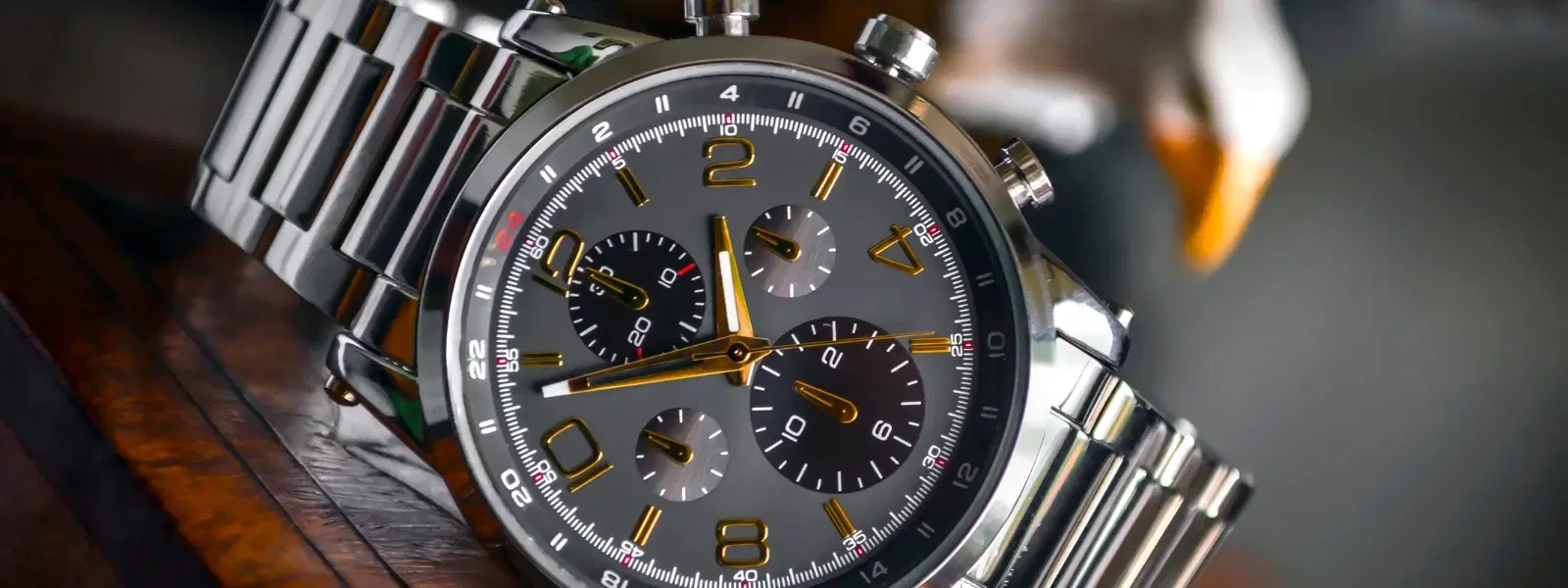
Luxury Edit
•04 min read

Rolex watches are synonymous with luxury, precision, and timeless elegance. In this guide, we trace the history of Rolex watches from their early days to the pioneering innovations that shaped the world of high-end timepieces. Readers will learn about the evolution of Rolex design, their craftsmanship, and the iconic models that have defined luxury watch history. By exploring each phase of this journey, you will appreciate the rich legacy and heritage that make Rolex a beacon among luxury watch brands.
The story begins with Hans Wilsdorf, a visionary whose ambition was to create wristwatches that combined precision with elegance. In 1905, he founded a watch distribution company in London, laying the foundation for what would soon become synonymous with luxury and accuracy. This early stage in the history of Rolex watches was marked by a drive to innovate and a commitment to excellence that revolutionized the industry. Over the years, this passion has contributed significantly to the reputation of Rolex craftsmanship and its standing among high-end timepieces.
1908: The trademark "Rolex" was registered, marking the official birth of the brand.
1910: Achieved the Swiss Certificate of Chronometric Precision.
In 1919, Rolex relocated its operations from London to Geneva, Switzerland. This move allowed the brand to tap into the superior craftsmanship and high-quality materials available in the heart of Swiss luxury watches. It was a strategic decision that bolstered its reputation and set the stage for future innovations, solidifying its position among the most prestigious watch collections in the world.
One of the standout achievements in the evolution of Rolex design was the introduction of the Oyster case in 1926. This breakthrough innovation not only made Rolex the pioneer of waterproof wristwatches but also set a new standard in the watchmaking industry. The Oyster case was celebrated for its hermetically sealed design, ensuring durability in even the most demanding conditions, a trait that continues to highlight Rolex innovations today.
Hermetically sealed design provides enhanced protection.
Screw-down crown and case back improve resistance to water.
In 1931, the introduction of the perpetual rotor marked another milestone in the history of Rolex watches. This self-winding mechanism transformed the functionality of wristwatches by using the natural motion of the wearer to generate energy. This innovative approach not only enhanced convenience for the user but also reinforced Rolex’s image as a leader in Swiss watchmaking heritage and technical prowess.

Over the decades, Rolex has continuously redefined luxury watch history by introducing models that blend functionality with artful design. Many iconic Rolex models have become symbols of success and elegance. These timepieces are celebrated for their robust design and meticulous detailing, setting benchmarks in both style and performance. The evolution of Rolex design is a beautiful narrative that intertwines technical innovation with fashion as self-expression and identity.
Rolex Datejust (1945): Introduced the first automatically changing date window.
Rolex Submariner (1953): Redefined diver’s watches with unmatched durability underwater.
Rolex Daytona (1963): A chronograph acclaimed for its functionality on the racetrack.
Rolex has been a front-runner in using luxurious materials that elevate both aesthetics and durability. The incorporation of Oystersteel, 18-karat gold, and advanced materials like Cerachrom ceramic bezels demonstrates their commitment to innovation and responsible fashion. These choices have not only enhanced the design but have also ensured that every model remains a cherished piece in any prestige watch collection.
The hallmark of Rolex craftsmanship lies in its unwavering attention to detail and quality control. Every Rolex timepiece undergoes rigorous testing and meticulous assembly to ensure optimum performance and longevity. The brand’s pursuit of perfection is seen in every facet of its design and technical features, reinforcing its reputation among luxury watch brands and high-end timepieces globally. This dedication to quality is a key aspect of Rolex watchmaking heritage that continues to inspire collectors and enthusiasts alike.
Beyond just being a tool to tell time, Rolex watches have come to symbolize cultural achievement and sophistication. Their presence in significant historical events, associations with explorers, and representations in films have elevated their status to that of a cultural icon. This cultural impact adds a layer of intrigue to the luxury watch history of Rolex, making it not just a marker of time, but a symbol of success and personal expression.
-8704a161-e35d-4932-b982-017add6889b1.png&w=3840&q=75)
Today, the legacy of Rolex endures through modern innovations and meticulously curated collections. Every new model blends time-honored techniques with contemporary design, seamlessly integrating the classic with the modern. Collections like the Oyster Perpetual, GMT-Master, and Yacht-Master continue to stand as a testament to Rolex craftsmanship and innovation, attracting a global audience that values both tradition and state-of-the-art technology.
Rolex watches remain coveted not only for their design and innovative features but also as valuable investments. Vintage models, in particular, have become prized possessions among collectors, often appreciating in value over time. The enduring appeal and historical significance of these models are critical factors in the prestige watch collections that have defined luxury watch history, ensuring that a Rolex remains a timeless treasure in any curated collection of luxury watches.
Did You Know? Rolex’s First Waterproof Watch Crossed the English Channel in 1927
In 1927, Rolex showcased the resilience of their Oyster case when Mercedes Gleitze swam across the English Channel with a waterproof Rolex on her wrist. Even after a grueling 10-hour swim, the watch remained fully functional. This bold demonstration highlighted not just the durability of the design but also established a legacy of trust and innovation that continues to define this iconic luxury watch brand.
Rolex was founded in 1905 by Hans Wilsdorf in London. The brand later relocated to Geneva, Switzerland to tap into premium craftsmanship and materials.
Rolex is owned by the Hans Wilsdorf Foundation, a private trust established by its founder.
The Oyster, introduced in 1926, was the first waterproof wristwatch and marked a significant milestone in Rolex innovations.
Rolex is celebrated for its impeccable design, groundbreaking innovations, and enduring craftsmanship, making it a standout emblem of Swiss luxury watches.
The evolution of Rolex watches is a testament to its dedication to innovation, superior craftsmanship, and timeless design. The journey from its early beginnings to today's modern models highlights the blend of technical excellence with artistic flair, creating watches that speak volumes about prestige and responsible luxury. This exploration into the history of Rolex watches reveals the intricate layers of design evolution and technical prowess, captivating collectors and enthusiasts who view these timepieces as more than just instruments to tell time—they are expressions of identity and style.